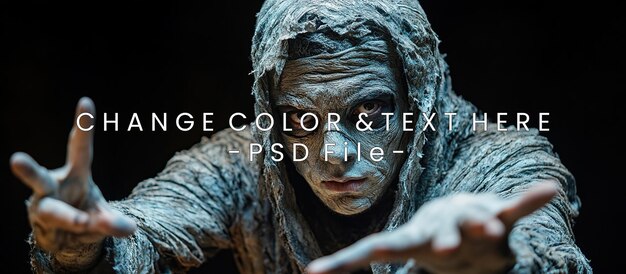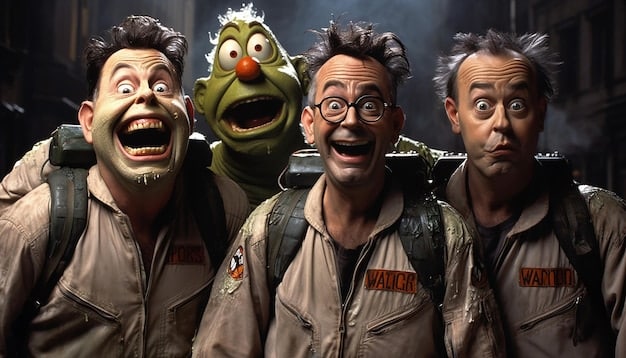Is It Time for a Reboot? Analyzing Cult Classic Revivals

Is it time for a reboot? The revival of cult classics presents both exciting opportunities and significant challenges, requiring a careful balance between honoring the original material and appealing to modern audiences, while also considering the potential pitfalls of tarnishing a beloved legacy.
The entertainment industry is constantly looking for the next big hit, often turning to familiar territory: beloved cult classics. But is it time for a reboot? Analyzing the potential pitfalls and successes of reviving cult classics has become a crucial question, as these projects can either reignite fanbases or fall flat, disappointing long-time devotees and failing to attract new viewers.
The Allure of Cult Classics
Cult classics hold a special place in the hearts of many. They’re more than just movies or TV shows; they’re experiences that resonate deeply, often defying mainstream appeal but fostering incredibly loyal fan bases. This inherent appeal is what makes them so attractive for reboots.
These films and shows often break away from traditional storytelling, featuring unique narratives, unconventional characters, and a distinct visual style that sets them apart from blockbuster fare. Their appeal lies in their ability to connect with audiences on a personal level.
What Defines a Cult Classic?
Several factors contribute to a film or show’s cult status. It’s not just about box office numbers or critical acclaim. Cult classics tend to:
- Have a dedicated, passionate fanbase: These fans often engage in cosplay, conventions, and online communities.
- Feature unique or controversial content: Cult classics often push boundaries and challenge social norms.
- Stand the test of time: Despite initial limited success, these works continue to gain popularity and relevance.
- Inspire imitation and homage: Other creators draw inspiration from cult classics, further solidifying their legacy.
Ultimately, a cult classic becomes more than the sum of its parts. It becomes a cultural phenomenon, a shared experience that binds fans together.
The Potential Benefits of Rebooting Cult Classics
Reviving a cult classic can bring several advantages. For studios, it’s a chance to tap into pre-existing fan bases and leverage nostalgia. For audiences, it offers the opportunity to revisit beloved stories and characters in a new context. However, success isn’t guaranteed.
A well-executed reboot can introduce a classic to a new generation, broadening its appeal and securing its legacy. It can also provide fresh perspectives on familiar themes and characters.
Expanding the Audience
One of the most significant benefits is the potential to reach a wider audience. Modern marketing techniques, streaming platforms, and updated visuals can make a cult classic more accessible to viewers who might have missed it the first time around.
Another benefit is the potential for modern retellings of the original story or characters from a previously loved story.
- Leveraging modern technology: Special effects, CGI, and improved production values can enhance the viewing experience.
- Reaching new demographics: Streaming services and online platforms can introduce cult classics to younger audiences.
- Capitalizing on nostalgia: Marketing campaigns can tap into existing fan bases, generating buzz and excitement.
However, it’s crucial to balance modernization with honoring the original material. Overdoing it can alienate existing fans.
The Pitfalls and Challenges of Revivals
Rebooting a cult classic isn’t without its risks. The bar is set high, and fans often have strong opinions about what made the original so special. Missteps can lead to backlash and accusations of disrespecting the source material.
Maintaining the essence of the original while modernizing it for contemporary audiences is a delicate balancing act. Studios must tread carefully to avoid tarnishing a beloved legacy.
Common Mistakes in Rebooting
Several common mistakes can doom a reboot from the start. These include:
One pitfall is misinterpreting what made the original loved in the first place, whether that be the tone, story or characters.
- Ignoring the source material: Deviating too far from the original plot, characters, or themes.
- Misunderstanding the tone: Failing to capture the unique atmosphere or humor of the original.
- Catering too much to mainstream audiences: Sacrificing the original’s quirks and unconventional elements for broader appeal.
- Over-relying on nostalgia: Using nostalgic elements as a crutch, rather than creating something new and engaging.

The key is to strike a balance between honoring the past and forging a new path. A reboot should enhance the legacy of the original, not diminish it.
Balancing Original Essence with Modern Appeal
The key to a successful reboot lies in finding the right balance between respecting the original and updating it for a new audience. This requires a deep understanding of what made the cult classic resonate in the first place.
It’s about preserving the spirit of the original while making it relevant and engaging for modern viewers. This often involves reimagining characters, updating storylines, and incorporating contemporary themes.
Strategies for Success
Here are some strategies for achieving this balance:
Understand the fanbase of the original and respect where they come from in your new reboot.
- Involving original creators: Consulting with the original writers, directors, or actors can ensure that the reboot stays true to the original vision.
- Updating special effects and production values: Modern technology can enhance the viewing experience without sacrificing the original’s charm.
- Reimagining characters and storylines: New interpretations can add fresh perspectives while honoring the original’s core themes.
By striking this balance, reboots can successfully bridge the gap between old and new, honoring the legacy of the original while creating something new and exciting for modern audiences.
Examples of Successful and Unsuccessful Reboots
Looking at examples of both successful and unsuccessful reboots can provide valuable insights into what works and what doesn’t. Some reboots have managed to capture the essence of the original while others have fallen short, disappointing fans and critics alike.
Analyzing these cases can help studios understand the delicate balance required to revive a cult classic effectively. It’s about learning from both the successes and failures of past attempts.
Case Studies
Here are a couple of examples:
Some reboots of cult classics have honored and enhanced the original series. Others have created something entirely different.
Successful reboots:
- “Battlestar Galactica” (2004): This reboot reimagined the original series with a darker, more complex storyline, earning critical acclaim and a devoted fanbase.
- “Evil Dead” (2013): This remake paid homage to the original while delivering a terrifying and visually stunning experience for modern audiences.
Unsuccessful reboots:
- “RoboCop” (2014): Many people cite this reboot as too clean when compared to the dark and gritty original.
- “Ghostbusters” (2016): Received mixed reviews due to its perceived lack of originality and reliance on gender-swapping the original characters.
Ultimately, the success of a reboot depends on how well it understands and respects the legacy of the original while also bringing something new and exciting to the table.
The Fans’ Perspective: Expectations and Reservations
Fans are the heart and soul of any cult classic, and their opinions are paramount when it comes to reboots. They often have strong expectations and reservations, shaped by their deep connection to the original material.
Understanding the fans’ perspective is crucial for any studio considering a reboot. It’s about acknowledging their passion, respecting their concerns, and ultimately delivering a product that honors the original while also providing a fresh and engaging experience.
What Fans Want
Several factors contribute to fan satisfaction:
If you are going to reboot a cult classic, listen to the fans and understand what they want.
- Authenticity: Maintaining the original’s tone, characters, and themes.
- Respect: Honoring the legacy of the original and avoiding unnecessary changes.
- Innovation: Bringing something new and exciting to the table without sacrificing the original’s essence.
- Nostalgia: Tapping into the fans’ memories and emotions without relying too heavily on it.
By understanding and addressing these concerns, studios can create reboots that resonate with fans and enhance the legacy of the original.
| Key Point | Brief Description |
|---|---|
| 💡 Allure of Cult Classics | Unique narratives & passionate fanbases drive interest in reboots. |
| ⚠️ Pitfalls | Ignoring source material & misinterpreting tone can doom reboots. |
| ⚖️ Balancing Act | Respecting original essence while modernizing for new audiences is crucial. |
| 💖 Fan Perspective | Authenticity & innovation are key to satisfying devoted fanbases. |
FAQ
A cult classic film is characterized by a dedicated, passionate fanbase and unique or controversial content. These factors help make it stand the test of time and inspire homages.
Rebooting a cult classic allows tapping into pre-existing fan bases, potentially expanding the audience and securing the legacy of the original work for new generations.
Risks can include alienating fans by deviating too far from the source material, misunderstanding the tone, or over-relying on nostalgia rather than creating something new.
Studios can include original creators, update special effects, and reimagine characters and storylines while remaining respectful to fans of the original cult classic.
Fans generally expect authenticity, respect for the original’s legacy, innovation that doesn’t sacrifice the essence, and nostalgia that enhances rather than overwhelms the new adaptation.
Conclusion
Reviving cult classics is a high-stakes gamble, balancing potential rewards with significant risks. The key to success lies in deeply understanding and respecting the original material, while innovatively reimagining it for modern audiences. By involving original creators, updating technology without sacrificing charm, and listening closely to fan expectations, studios can breathe new life into beloved stories and secure their legacies for generations to come.





